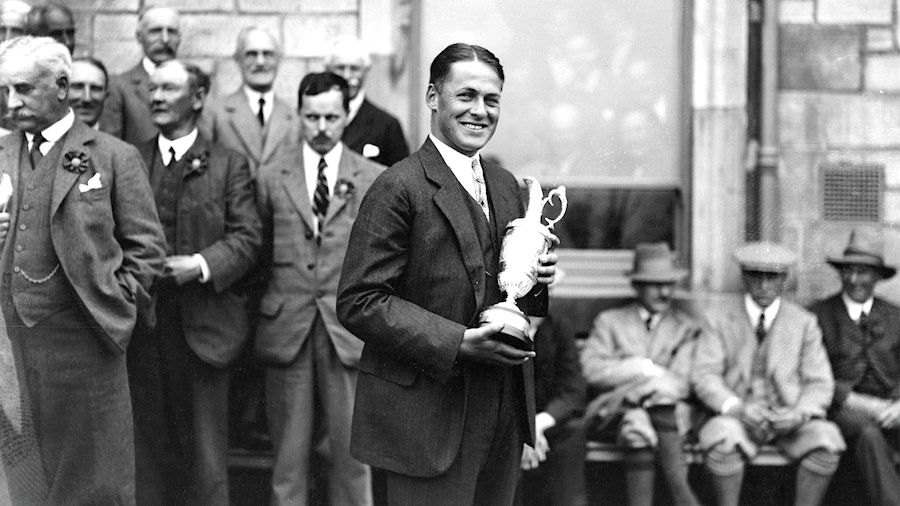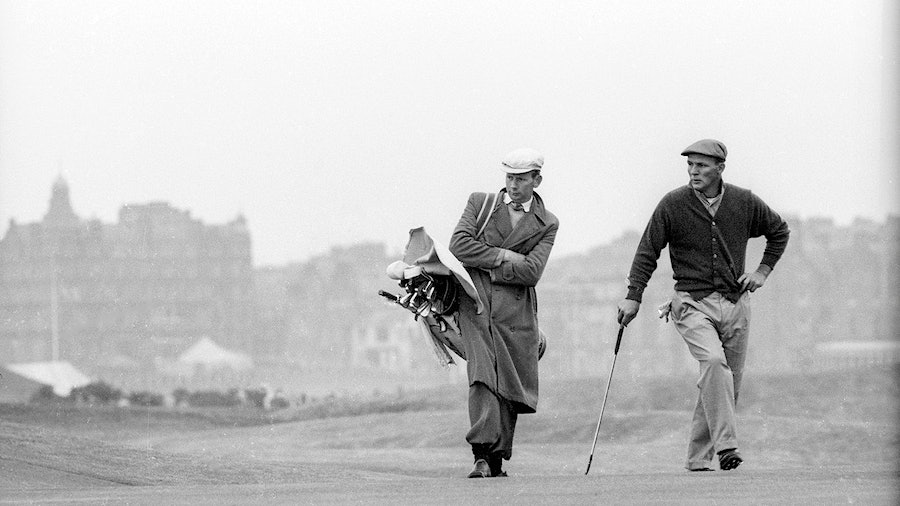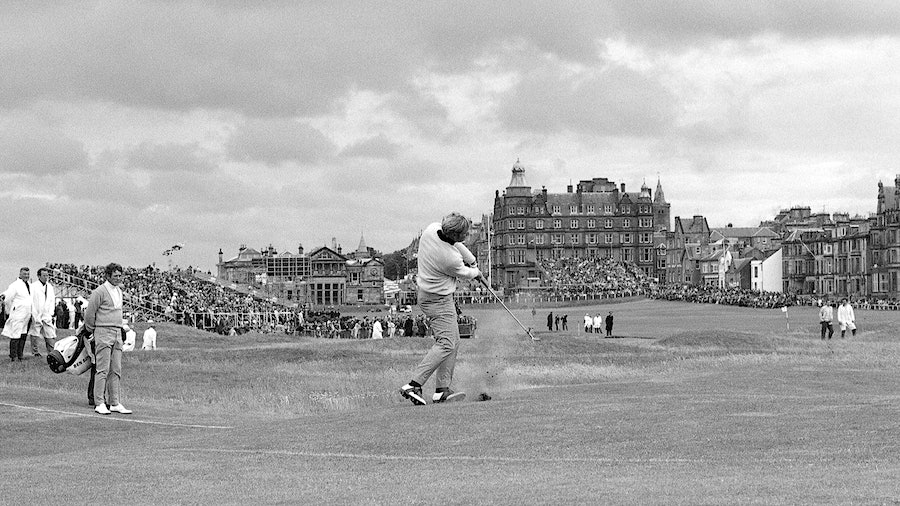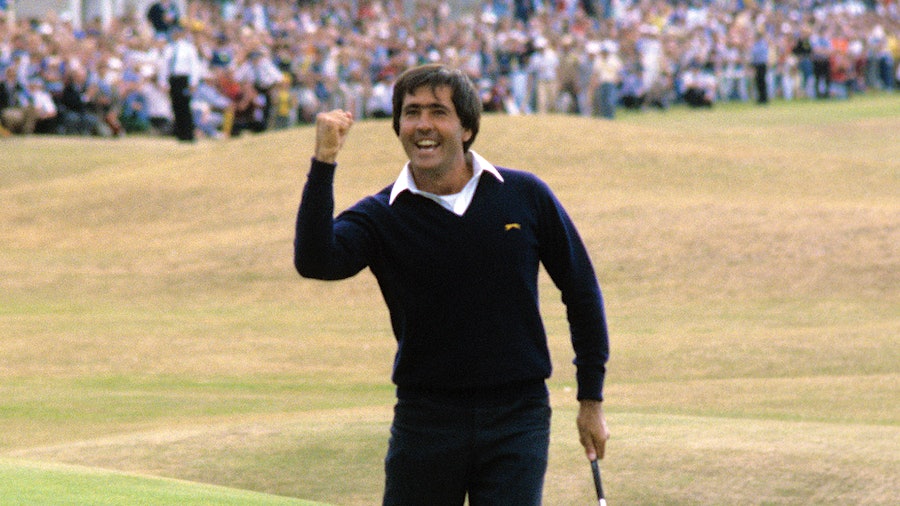The Home Of Golf

he Open Championship returns to St Andrews this July, more than fitting for the 150th rendition of the game’s oldest major. Yes, it’s the Open Championship, not the British Open as colonials on the other side of the pond are apt to call it. And yes, it is a really big occasion. The Royal & Ancient Golf Club of St Andrews, which runs the mammoth event, says that it received a record 1.3 million ticket applications for this year’s Open, and that total attendance will push 300,000.
There just isn’t anything like an Open at St Andrews, known as the home of golf. While the Open is played at other marvelous courses like Muirfield, Troon and Birkdale, all of which take the word “Royal” before their names, there is nothing so regal as a magnificent championship played over the Old Course in the “Auld Grey Toon.” This will be the 30th time the Open has been held on the Old Course, more than any other venue. Its first was in 1873, when Levi’s jeans were created, President Ulysses S. Grant was sworn in for a second term and the Heineken brewery was founded in Amsterdam.
Golf has been played at St Andrews links for 600 years. In 1552, Archbishop Hamilton’s Charter recognized the right of the people of St Andrews to play golf at the links, and most agree that the Old Course is the world’s first true golf course and remains truly rooted to the essence of the game. It is here that Old Tom Morris and his son Young Tom rose to prominence as professional golfers. All the great players of the game have played here.
“When you walk on the course, it’s almost as if you are walking on sacred ground. Every turn seems to tell a different story and every hole has so much character to it,” all-time great Jack Nicklaus said in advance of playing his final major championship at the Old Course in 2005. “Personally, I fell in love with St Andrews and the Old Course the moment I arrived there for the 1964 Open.”
The Old Course doesn’t wow you with massive bunkering, major water features or enormous carries over cliffs above the sea. It rolls along on essentially flat land with just enough moguls to cast what might have seemed a lovely drive off into a pot bunker. It is nuanced, subtle, only revealing itself over time.
Its major features include its seven sets of double greens beginning with holes 2 and 16 (all of the double greens serve holes that add up to 18). Perhaps the most special of those is the No. 7/11 complex, which pushes up against the Eden estuary. There, if you are lucky, you might find some seals frolicking. St Andrews also features the quirkiest of tee shots on the Road Hole, the long par 4 17th, in which you fire your ball over what now is a re-creation of the old railroad sheds that used to occupy that space. The ball will sail past some portion of the Old Course Hotel on the right, and you might want to be on the lookout should you be staying there and standing on a balcony to take in the view. And no view of St Andrews is more memorable than the short, historic stone Swilcan Bridge, where players walking the 18th hole cross. Who knows how many millions of pictures have been taken there, most famously of Arnold Palmer and Jack Nicklaus in their final appearances.
And behind the 18th green a street, Golf Place, is where countless other millions (golfers or not) have stood against the low railing to watch the Old Course’s famous finish. You might even get a bit of applause for holing that final, precious putt at the end of your journey through golf history. We take a look back now at five unforgettable Open Championships at the Old Course that defined careers, and the venerable old track itself.
Bobby Jones 1927
When Bobby Jones, the immortal amateur whose accomplishments in the 1920s were instrumental in elevating the game, first came to the Old Course at St Andrews for the 1921 Open, he was not impressed.
A mere lad of 19 at the time, Jones had yet to win any of his 13 major championships. He viewed the course as nothing more than pasture land, and his play reflected a certain disdain for being there. In the third round he shot 46 on the front nine and then, after leaving two shots in the bunker on the par 3 11th, he ripped up his scorecard and walked off the course.
“My ball came out of the bunker in my pocket, and my scorecard found its way into the River Eden,” he would recall.
Six years later, in 1927, he returned as a far more mature and accomplished player, having won the Open the previous year along with two U.S. Opens and two U.S. Amateurs. He had lit up the golf world and crowds estimated at 20,000 flocked to the course to see him. Back then, all players had to qualify for the Open over 36 holes in advance of the tournament, and Jones eased his way into the field. He then jumped out into the lead in the first round with an outstanding 68, five-under-par at the time. His 72-hole total of 285 was a record. He finished six shots ahead of Englishmen Fred Robson and Aubrey Boomer.
In 1958, the city of St Andrews awarded Jones the “Freedom of the City.” In his acceptance speech, given before 1,700 adoring fans in a packed hall at St Andrews University, Jones had clearly erased his experiences of 1921 and embraced the town and the Old Course in his speech.
“I could take out my life everything but my experiences here in St Andrews,” he said to the crowd, “and I would still have had a rich and full life.”
Arnold Palmer 1960
No, Arnold Palmer did not win the 1960 Open at St Andrews, finishing second to Ken Nagle. But his first appearance in the Open was a transfusion of energy into a flagging championship that was suffering from neglect by the top international players.
Sixty years ago, it took a long time—and a lot of money—if you were an international player with aspirations of an Open Championship. The purse was small and winning there had little in the way of glamor. Ben Hogan had won the tournament at Carnoustie in 1953, but that was the only time he played in the Open Championship. That victory was Hogan’s third major championship of the year, after winning the U.S. Open and the Masters.
Like Hogan, Palmer had won the Masters and U.S. Open in 1960. He had designs of winning golf’s Grand Slam, a term he had helped coin. Hogan had been unable to do so in 1953 because by playing in the Open he was unable to make it back to the states in time for the PGA Championship, which then required qualifying rounds to enter the tournament proper.
During the final round of the 1960 Open, then played on Saturday, Palmer was four strokes behind when he mounted one of his trademark charges. He birdied the 13th and 15th holes, managed a par 4 at 17th for the first time that week and then birdied the last for a 68, the roars washing over Nagle, who was in the group behind.
Nagle bogeyed the 15th but holed a tricky putt for a 4 at the 17th. A par at the last gave Nagle a 71 and a winning total of 278, one better than Palmer.
Palmer would go on to win the Open in 1961 at Royal Birkdale and 1962 at Royal Troon. He would choose to end his championship career at the 1995 Open at St Andrews at the age of 65.
“It was exciting for me because I was trying to fulfill a desire that I had to play in the Open Championship,” Palmer said of his decision to play in the 1960 Open. “And I felt that if you were going to be a champion, you couldn’t be a champion without playing in the Open and hopefully winning the Open.”
As for St Andrews, Palmer came to realize that Old Course was full of intrigue and hid within itself the mysteries of the game. In 2015, he penned a story for the Open Championship annual which said in part, “You begin to realize the subtle brilliance and high degree of difficulty the most famous golf course on earth throws at you.”
Jack Nicklaus 1970
Jack Nicklaus came to St Andrews in 1970 as the most accomplished golfer on the planet. The Golden Bear had already won three of his six Masters, two of his four U.S. Opens, one of his five PGA Championships and one of his three Open titles. Wherever he went, he was the favorite and at St Andrews it was no different. But his win at this Open wasn’t so much a factor of his usual solid play as it was by what might be the most famous missed putt in the history of championship golf.
In the final round, Doug Sanders, the flamboyant American who was the game’s most dapper (or is that outlandish?) dresser and bon vivant, stood over a putt of a little less than three feet for par on the 18th hole. Sinking the putt would win him the Claret Jug. Sanders stalked the putt from all angles and nervously addressed the ball. He then made a stroke that would be the pure definition of a yip, pushing the ball over the right lip for a bogey. He finished with a total of 285, the same as Nicklaus, and the tournament went to an 18-hole playoff for the very first time.
Nicklaus was four shots ahead on the back nine of the playoff but he made a pair of bogeys and Sanders made a birdie to trim the lead to a shot playing the 18th hole, the 360-yard par 4. It was here that Nicklaus, one of golf’s most prodigious hitters, famously removed his sweater with the intent of freeing himself to drive the green. He did, but the ball rolled off the back, just into the rough. Sanders had driven the ball close to the green on the right side and pitched to a little over three feet. Nicklaus knew he needed to get up and down for a birdie to win.
His chip shot came up six feet short, but his putt caught enough of the right edge of the hole to fall in, giving him the title. In what then was a rare display of emotion, Nicklaus flung his putter in the air.
Nicklaus had once said, “If you’re going to be a player people will remember, you have to win the Open at St Andrews.” He won his third and final Open at St Andrews in 1978.
Seve Ballesteros 1984
Seve Ballesteros was widely considered the second coming of Arnold Palmer in the 1980s. The handsome, dashing Spaniard with his bold, even audacious game, was capturing hearts and minds everywhere.
By the time he arrived at the Old Course in 1984, he already had one Open Championship under his belt, won at Royal Lytham in 1979 where he held off Jack Nicklaus and Ben Crenshaw. He also had won the 1980 and 1983 Masters.
The field at the Open was stellar, with Tom Watson coming off two consecutive Open wins and players like Nick Faldo, Bernhard Langer, Fred Couples and Greg Norman making their presence felt. But it was the relatively unknown Ian Baker-Finch who found himself atop the leaderboard after three rounds tied with Watson. Ballesteros was right in the mix, only two strokes behind the leader.
Ballesteros was playing in the group ahead of Watson and Baker-Finch, who had driven the ball into the Swilcan Burn on the first hole and was on his way to a crushing 79. For the first time that week Ballesteros managed to par the 17th hole. Watson was not so fortunate. After his drive nearly went out of bounds, his approach shot to the shallow 17th green went over and across gravelly Links Road, lodging only a couple of feet from the wall. It left him a very difficult pitch-and-run that he managed to just dribble onto the green from where he missed the putt and made bogey.
On the 18th green, Ballesteros had a 12-foot putt for birdie that paused at the lip before diving in to complete a round of 69 and a two-shot win over Watson and Langer. Ballesteros famously pumped his fist over his head, turning to all points of the compass.
“I was so excited,” Ballesteros said later. “It was the happiest single shot of my life.”
Tiger Woods 2000
Tiger Woods, at the age of 24, was playing the best golf that had ever been played. When he stepped up to the tee at the 2000 Open he had already won three of golf’s four majors, and only needed the Open to complete the career Grand Slam.
The U.S. Open at Pebble Beach, held just one month before, was an absolute rout. Woods shot 12-under-par (despite a triple bogey in the third round) and won by an astounding 15 strokes over Ernie Els and Miguel Ángel Jiménez. Equally astounding were the odds the British bookies were offering for Woods to follow with a win at St Andrews, as low as 2:1.
At Pebble, Woods had avoided three-putting. On the Old Course, renowned for its small, hidden pot bunkers, he did not find a single one. He made only three bogeys for the week.
Els took the lead in the first round with a 66 with Woods a stroke back. Woods surged to a three-shot lead with a 66 in the second and shot 67 in the third round to go ahead by six. His 69 in the final round left him at 19 under par, a record for any major. He finished eight strokes ahead of anyone else, and had his career Grand Slam.
“To have the opportunity to complete the Slam at St Andrews makes it even more special,” Woods said.
Less than one month later he won the 2000 PGA Championship, then he went on to claim the 2001 Masters, completing the Tiger Slam, holding all four major trophies at the same time.









